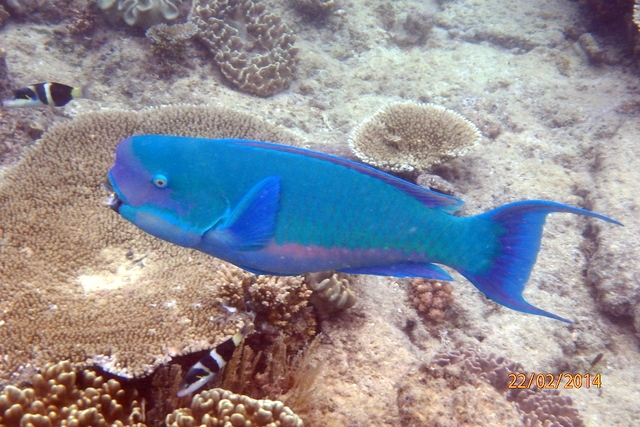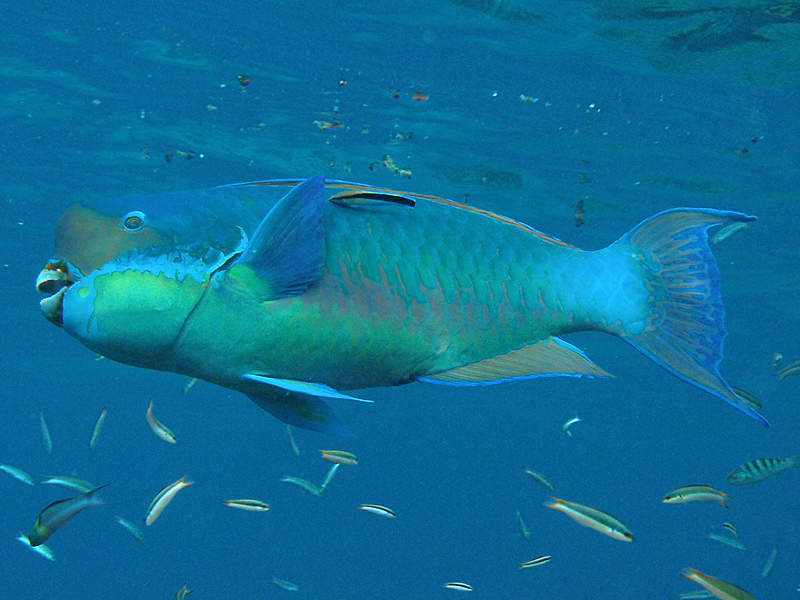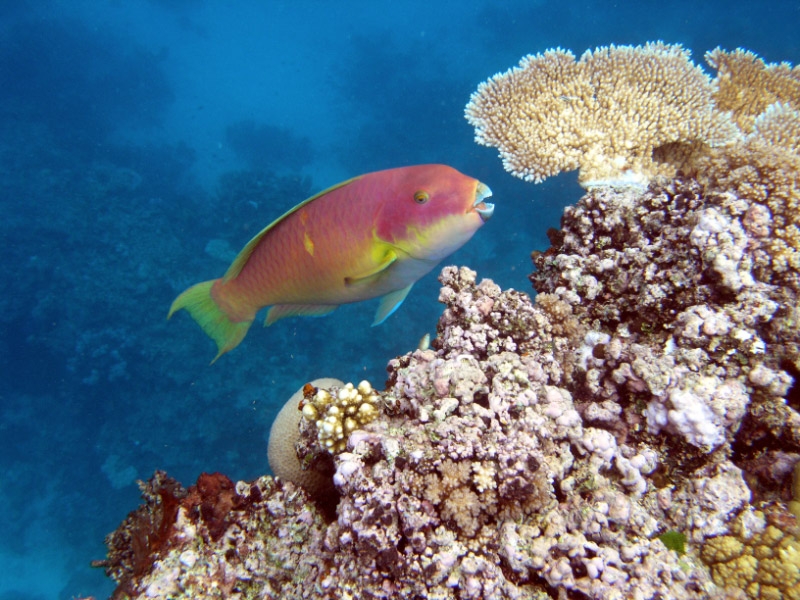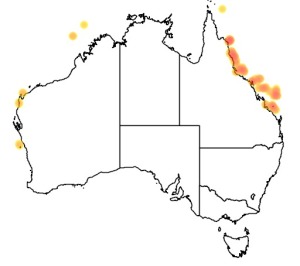Colours
Distinguishing features
A large fish with a blue-green body and a paler patch on the throat region, and purple edging to the scales. The initial phase is similar, with colours muted. Large individuals have a prominent bump on the top of the head and trailing filaments on the tail. Occasional IP specimens have a bright orange colouration, but this is not seen in terminal male fish. The juvenile is dark brown with a series of horizontal white stripes, similar to C. sordidus.
Size
- Up to 80 cm (Standard length)
Depth range
- Depth range data is not yet available.
Synonyms
Distribution
Distribution and habitat preferences
Mainly shallow flats and fronts of exposed reef habitats, and lagoonal and backreef patch reefs.
Found in most locations around the Island.
Behaviour
The Steephead Parrotfish, along with others from the genus Chlorurus, have exposed teeth in powerful jaws, and they use an excavating mode of feeding. They take benthic turf algae from dead coral surfaces and excavate the reef matrix as they feed, hence they are considered important agents of bioerosion. Spawning takes place in the summer months at reef passes and points with good water flow. This species reaches at least 15 years of age.
Web resources
References
- Bellwood, D.R. (1996). Coral reef crunchers, Nature Australia, Autumn: 48-55. LIRS catalog number 604.
- Bellwood, D.R. and J.H. Choat (2011). Dangerous demographics: the lack of juvenile humphead parrotfishes Bolbometopon muricatum on the Great Barrier Reef. Coral Reefs, 30: 549-554. LIRS catalog number 1474.
- Bellwood, D.R., A.S. Hoey and T.P Hughes (2012). Human activity selectively impacts the ecosystem role of parrotfishes. Proceedings of the Royal Society B, 279: 1621-1629. LIRS catalog number 1526.
- View all references








